Regional News
Tragic Hunt for 18 Indian Sailors Trapped on Navy Submarine After Explosion
NEW DELHI — Indian naval divers on Wednesday afternoon opened the main hatchway of a stricken, Russian-made Indian submarine that caught fire, blew up and sank at dock earlier in the day in one of the worst naval accidents in Indian history.
But visibility for the divers within the sunken boat was almost zero, and the effort to rescue or recover the 18 missing crew members was expected to take time. Three sailors who were on the outside of the ship when it exploded managed to scramble to safety.
On Monday navy divers managed to open the first hatch of the damaged submarine but there has yet to be contact with any of the crew on boardAdm. D. K. Joshi, India’s naval chief, said at a news conference that the chances were slim that any of the missing sailors remained alive.
“There is a possibility, however remote it might be, of an air pocket,” he said. “We hope for the best but have to be ready for the worst.”
The submarine was docked at the Lion Gate naval shipyard, close to South Mumbai’s busy financial district and within two miles of the Gateway of India. The water where the accident occurred is so shallow that part of the stricken vessel protruded above the surface.
Admiral Joshi said there had been no communication with the missing crew since a small explosion around midnight near the bow of the submarine ignited two huge blasts from onboard munitions, possibly torpedoes or cruise missiles. The heat from the explosions and the resulting two-hour fire was so intense that it fused the submarine’s hatchways, making rescue efforts even more challenging.
“We cannot rule out the possibility of sabotage, although the indicators at this time would not support that conclusion,” Admiral Joshi said. “It is essentially an onboard explosion.”
The cause of the explosion on the 16-year-old INS Sindhurakshak, could not be immediately determined. After a February 2010 explosion in the battery compartment left one dead and two injured, the vessel was sent to the Zvezdochka shipyard in Russia for a two-and-a-half-year, $80 million retrofit. It was handed back to the Indian Navy in January, and went on a three-month, 10,000-mile shakedown cruise that ended successfully in April in Mumbai.
The crew had recharged the sub’s batteries three days before the blast, so a battery leak was not a likely cause this time, Admiral Joshi said.
After divers explore the submarine for survivors, they will try to seal two or three internal compartments, expel the water and refloat the boat, Admiral Joshi said. Only then will investigators be able to begin to look into the causes of the accident.
Defense Minister A. K. Antony went to Mumbai, where the entrance to the shipyard was heavily guarded on Wednesday by police and naval personnel. A scrum of journalists and onlookers stood outside the gates for much of the day.
“I express my heartfelt condolences to the families of those sailors and officers who were inside this submarine,” the minister said at the news conference.
An Indian news channel, NDTV, broadcast a viewer’s video of what appeared to be a series of blasts lighting up the Mumbai sky. The explosions took place a day before India’s Independence Day celebrations, when security is normally tightened at government offices and military facilities.
The Sindhurakshak is one of the 10 Kilo-class submarines that form the backbone of India’s conventional submarine force. India is building a new class of conventional submarines, called the Scorpene, with French and Spanish help. But that effort, like many Indian defense projects, has been marred by delays and squabbling among its international partners, and the first submarines are not expected to be delivered until 2015 at the earliest.
India has long relied on Russian-made military equipment, including MIG-21 fighters, whose safety and reliability have been increasingly questioned. India is the largest arms buyer in the world because its own defense manufacturing industry has been unable to deliver high-quality, low-cost weapons to satisfy the country’s wide range of defense needs.
“This accident again raises questions about Russian standards of manufacture and repair,” Adm. Arun Prakash, who retired from the Indian Navy in 2006, said in an interview. “Russian equipment is not always the best, and it is prone to failures.”
India’s defense purchases are increasingly crucial to the Russians, who have lost major customers in Libya and other Arab nations affected by the Arab Spring. President Vladimir V. Putin of Russia visited India in December and signed weapons contracts valued at $2.9 billion.
India’s submarine service was already depleted before the explosion. Only nine of its submarines were considered operational before Wednesday, and just five or six are operating at any given time — too few to guard India’s extensive coastline adequately.
India has become increasingly concerned about China’s naval ambitions and is desperately trying to catch up with its larger rival’s rapid naval-building program. But China now has roughly 260 ships compared with fewer than 100 for India.
India’s attempts to create its own defense manufacturing sector have been riddled with failure. Efforts to design and build new aircraft, tanks, howitzers and machine guns have failed spectacularly in recent decades.
The navy has fared relatively better than the other branches, and its launching of the hull of the first indigenously built aircraft carrier on Monday was a huge step forward. But the navy still must buy critical matériel and technology from foreign suppliers.
Yet corruption scandals have marred Indian defense contracting so badly that the government has slowed its purchases abroad for fear of igniting further controversy. Unable to build or buy, India is becoming dangerously short of vital defense equipment, analysts say.
A recent scandal involved a $600 million contract for 12 high-end helicopters for top Indian officials, bought from the Italian manufacturer Finmeccanica. Italian prosecutors say the contract was marred by bribery and that Finmeccanica knew some of the Indian Air Force’s supposedly secret requirements for the contract while bidding on it.
Another problem has been a history of distrust of the military by India’s dominant political class. India won its independence through strikes and protest marches, not by force of arms, and India’s main rival, Pakistan, has been dominated by military dictators for much of its history. India’s leaders have tried to keep its military at a distance, and military leaders are rarely invited into the inner circle of decision-making.
India’s strategic challenges are mounting. After a long quiescence, India and Pakistan have recently traded fire along their disputed boundary in Kashmir, and China has been probing its disputed border regions with India in unusually confrontational ways.
And after a nearly a decade of rapid growth, India’s economy has in recent months slowed substantially. The value of the rupee has plunged while the country’s foreign exchange reserves have dwindled, making purchases of foreign equipment even more difficult and dear.
“This is a turbulent birthday for India,” C. Uday Bhaskar, a retired Indian Navy commodore who is now with the National Maritime Foundation, the navy’s civilian research center, said in an interview. “The security challenges for this country are complex and mounting.”
Regional News
Thai Immigration Police Detain Over 26,000 Illegal Migrant Workers
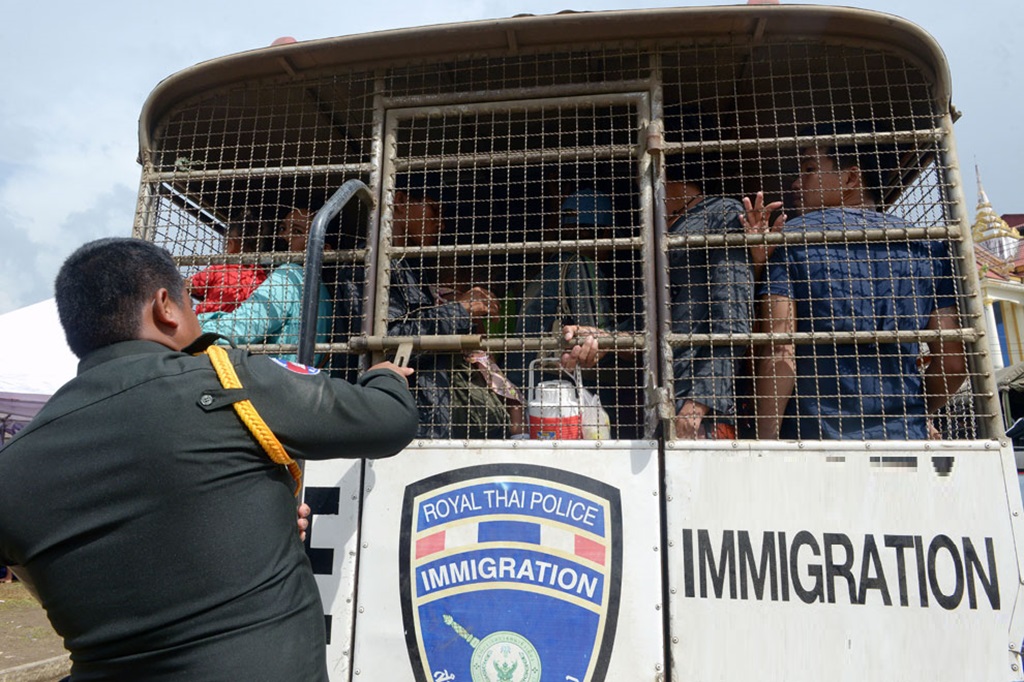
Thailand’s Immigration Police have detained approximately 26,000 illegal migrant workers from Laos, Myanmar, and Cambodia during an eight-day operation in Bangkok and surrounding regions, according to a Royal Thai Police spokesperson.
Mr Adisorn Keudmeuangkhon of the Bangkok-based Migrant Working Group said the drive was in response to an increasing number of concerns about an influx of illegal migrant labor.
“Some Thai people see that many illegal workers are competing for their job positions in the past few months,” he told me. “That’s why the ministry has to take tougher action.”
Civil strife in Myanmar and the recent implementation of a military conscription have driven thousands of Burmese into Thailand, while severe inflation and limited job opportunities in Laos have also encouraged an influx of workers from that country.
Between June 5 and 12, officials detained and checked 20,111 Myanmar laborers, 1,659 Laotian migrant workers, and 3,971 Cambodian workers, according to the Ministry of Labor.
It marked the start of a 120-day campaign to audit workplaces and arrest unlawful migrant workers, according to the government.
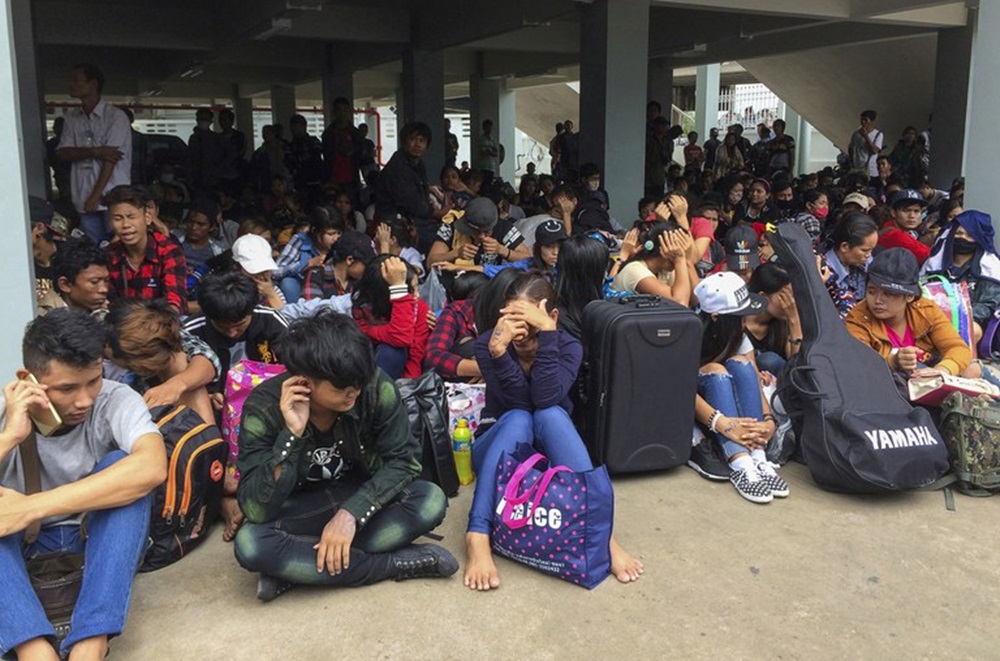
Migrant Workers to be Deported
According to Keudmeuangkhon, undocumented workers face fines ranging from 5,000 to 50,000 Thai baht (US $136 to $1,365), deportation, and a two-year prohibition on re-entering Thailand.
Authorities did not intend to file criminal charges, he claimed.
Authorities raided 1,774 workplaces, according to Moe Gyo, chairman of the Joint Action Committee on Burmese Affairs, which advocates for Myanmar labor rights.
He stated that since the military junta activated conscription, there has been an upsurge in the number of arrests of Myanmar citizens in Thailand who do not have a work permit identity card.
All men aged 18 to 35 and women aged 18 to 27 must serve in the military for at least two years. The first group of 5,000 conscripts summoned by Myanmar’s junta will start duty at the end of this month, military sources told AFP on Monday.
According to Keudmeuangkhon, the bulk of Lao migrant workers in Thailand work as fresh market shopkeepers, restaurant servers, and mall salespeople.
Most people visit Thailand as part of ASEAN’s visa-free policy for tourists, but they stay longer than the 30-day restriction once they find job.
“Employers like to hire Lao migrant workers in the service sector because they can speak fluent Thai,” he told me.
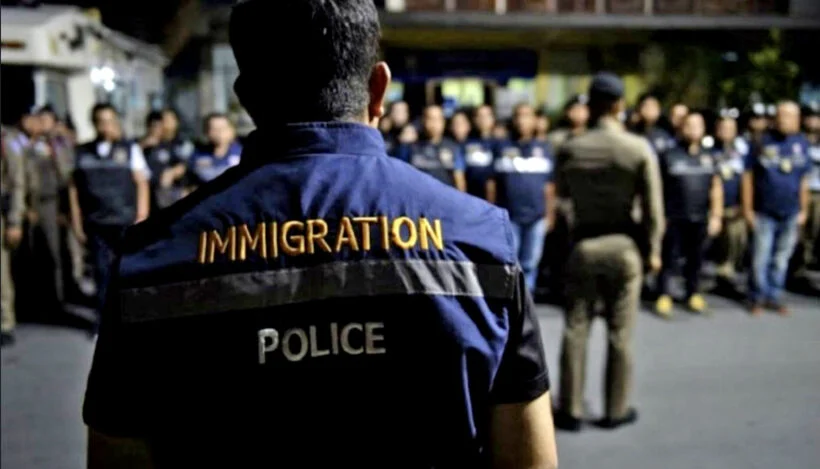
Immigration Police Detain Illegal Migrant Workers
The Thai Cabinet may approve an enhanced program for Thai employers to register their unauthorized foreign workers in July or August. Keudmeuangkhon explained.
Last month, the Thai Ministry of Labor’s Foreign Workers Administration office announced that 268,465 Lao migrant workers were officially working in Thailand.
Baykham Kattiya, Lao Minister of Labor, told Radio Free Asia earlier this month that there are 415,956 migrant workers in other nations, the majority of whom work in Thailand.
According to her, the Lao government believes that over 203,000 persons working outside of the nation lack proper work documents.
However, a Lao official familiar with the labor industry informed Radio Free Asia, a BenarNews-affiliated news station, on June 20 that the number of illegal Lao migrant workers in Thailand and abroad is likely significantly greater.
“They go to other countries as illegal migrant workers through different types of methods – as tourists or students,” said the politician. “Thus, it is hard for the immigration police to collect data on these people.”
Government Officials Responsible for Smuggling in Migrant Workers
Government Officials Responsible for Smuggling in Migrant Workers
News
High School Student Dies After Being Electrocuted By School Water Dispenser
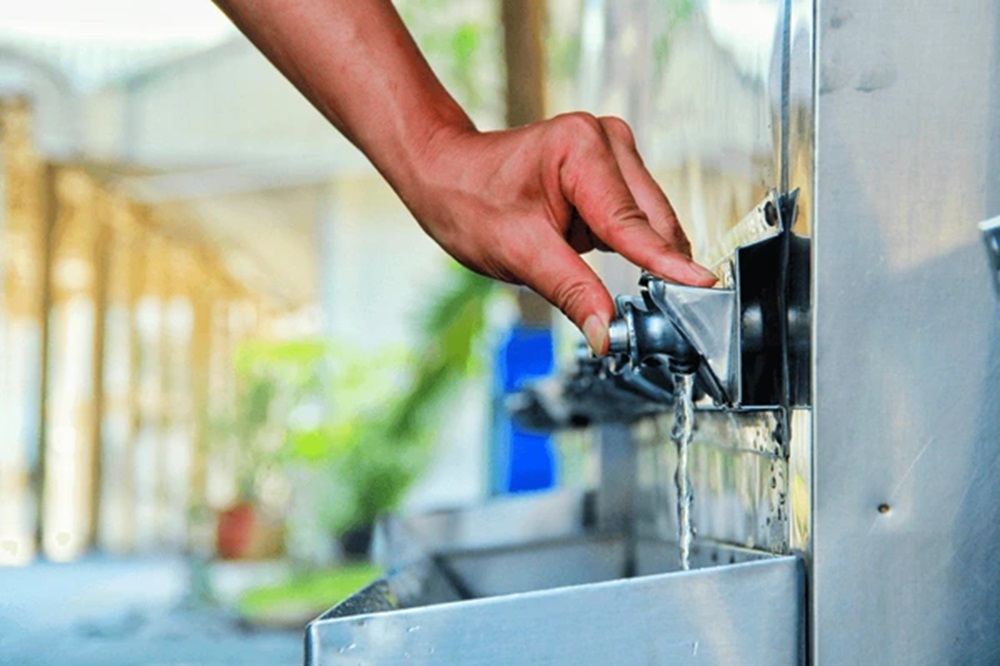
Thailand’s Office of Basic Education Commission has initiated an investigation into the electrocution of a 14-year-old student by a water dispenser in a high school. The event happened at noon on Friday, during the high school’s sports day. The victim was a Grade 8 student.
According to local media in Trang Province, the incident occurred when a teacher instructed the pupil to turn off a water dispenser amid a heavy rain.
According to a witness, the child collapsed while strolling with his friend near a water station. The friend claimed he attempted to assist but was also shocked by electricity.
According to reports, the friend then recovered, left the site, and requested assistance from teachers. A teacher ran to the scene and used a towel to pull the boy away by the ankle. He was taken to the hospital, but it was too late, they claimed.
The event sparked criticism from parents and netizens over school safety, as well as the slow response to aid the young youngster.
Mr. Chainarong Changrua, head of Trang-Krabi’s Secondary Educational Service Area Office, told local media on Sunday that forensic officers from Trang Provincial Police had visited the area. They discovered the blown breaker switch behind the water dispenser, he explained.
The breaker was burned out, thus the authorities assumed the disaster was caused by a short circuit that allowed energy to spill to a neighboring power pole. The student also appeared wet and was not wearing shoes when electrocuted.
According to the Office of Basic Education Commission, a probe team will complete its investigation this week.
The student’s father, Mr Pornchai Thepsuwan, 53, claimed he was saddened when he saw his son’s body. The boy (Wayu), was the youngest of two boys, he explained. He stated that following the tragedy, the school director and staff gave financial assistance to the families.
Mr Pornchai also said he would not seek charges against the institution because he believed it was an accident.
Electrical accidents in Thailand
Electrocution instances in Thailand have increased alarmingly in recent years. Many mishaps occur as a result of improper wiring and inadequate maintenance of electrical systems.
Public locations, such as schools and markets, frequently lack adequate safety precautions, putting individuals in danger. In rural areas, antiquated infrastructure exacerbates the situation, resulting in more frequent and serious events.
Although several high-profile cases have brought these challenges to light, genuine progress has been gradual. Furthermore, the rainy season heightens the likelihood of electrical accidents, as water and exposed wires do not mix well.
The government has made steps to strengthen safety standards, but enforcement is patchy. More education on electrical safety could help to reduce these accidents.
Unfortunately, better infrastructure and tougher rules may have prevented many of these incidents. The loss and injuries caused by electrocution are avoidable, emphasizing the need for immediate action.
Over 200 High School Students Facing Sedition Charges in Thailand
Over 200 High School Students Facing Sedition Charges in Thailand
News
Thailand’s Tourist Police Crackdown on Tourist Scammers in Pattaya
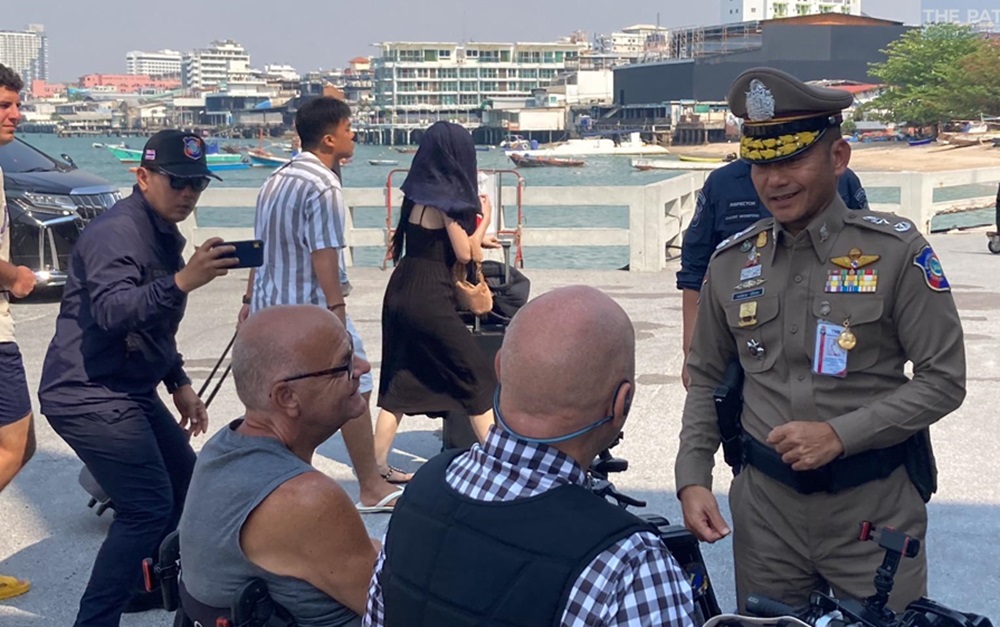
Thailand’s Tourist Police said it is collaborating with embassies from five countries to combat tourist scams and ten criminal gangs in Pattaya. The Tourist Police Bureau, convened a meeting on Thursday Pol Lt Gen Saksira Phuek-am told a press briefing.
Pol Lt Gen Saksira Phuek-am, the Tourist Police bureau commissioner said the participants included ambassadors from South Korea, Ukraine, Russia, India, and Switzerland.
He told the briefing the he had ordered a crackdown on tourist frauds, such as fraudulent or low-quality tour operators and unfair sales of goods and services. Stepped-up operations began on June 19 and will continue until June 25.
He stated that the agency was working with numerous organisations to increase tourists’ confidence in visiting Pattaya.
Gen Saksira spent time on the famed Walking Street speaking with officers on duty and assigned them to seek for members of ten criminal groups known to operate in Pattaya.
Meanwhile, Prime Minister Srettha Thavisin will visit Chon Buri on Saturday to assess the tourism situation. He intends to visit the site of a future Formula One racecourse near Khao Phra Tamnak in Bang Lamung District.
Prime Minister Srettha recently met with Formula One organisers in Italy to examine the potential of including Thailand on the race schedule in the future.
On Sunday, the Prime Minister will pay a visit to Rayong’s U-tapao airport to discuss development on the airport’s land, with the goal of encouraging investment in the Eastern Economic Corridor.
Police Chief Reinstated
In other police news, Pol Gen Torsak Sukvimol has been reinstated as national police chief following the conclusion of an investigation into a highly publicised quarrel, according to Wissanu Krea-ngam, Prime Minister Srettha Thavisin’s counsellor.
Mr Wissanu released the investigation’s findings on Thursday, after the prime minister formed a fact-finding committee chaired by Chatchai Promlert to investigate into the quarrel between Pol Gen Torsak and his deputy, Pol Gen Surachate Hakparn.
The four-month study revealed conflicts and disorder at all levels of the Royal Thai Police, but it was unclear whether these issues arose from a single cause or several causes, according to Mr Wissanu.
The findings revealed that both Pol Gen Torsak and Pol Gen Surachate were involved, with each team contributing to the tensions, he noted.
Mr Wissanu indicated that Pol Gen Surachate was reinstated as deputy national police head on 18 April following his relocation to the Prime Minister’s Office on 20 March. A disciplinary committee was formed to investigate Pol Gen Surachate, and he was ordered temporarily suspended from the police force.
Because there were no further difficulties to explore, it was decided to restore Pol Gen Torsak. He plans to retire on September 30.
On March 20, Mr Srettha abruptly transferred both top police officers to the Prime Minister’s Office in an effort to address the growing schism within the police service.
Kitrat Panphet, Deputy National Police Chief, was subsequently named Acting Police Chief. According to sources, Pol Gen Surachate could face money laundering charges related to online gaming networks.
Source: Bangkok Post
-

 News3 years ago
News3 years agoLet’s Know About Ultra High Net Worth Individual
-
Entertainment1 year ago
Mabelle Prior: The Voice of Hope, Resilience, and Diversity Inspiring Generations
-

 Health3 years ago
Health3 years agoHow Much Ivermectin Should You Take?
-

 Tech2 years ago
Tech2 years agoTop Forex Brokers of 2023: Reviews and Analysis for Successful Trading
-

 Lifestyles2 years ago
Lifestyles2 years agoAries Soulmate Signs
-

 Health2 years ago
Health2 years agoCan I Buy Ivermectin Without A Prescription in the USA?
-

 Movies2 years ago
Movies2 years agoWhat Should I Do If Disney Plus Keeps Logging Me Out of TV?
-

 Learning2 years ago
Learning2 years agoVirtual Numbers: What Are They For?
